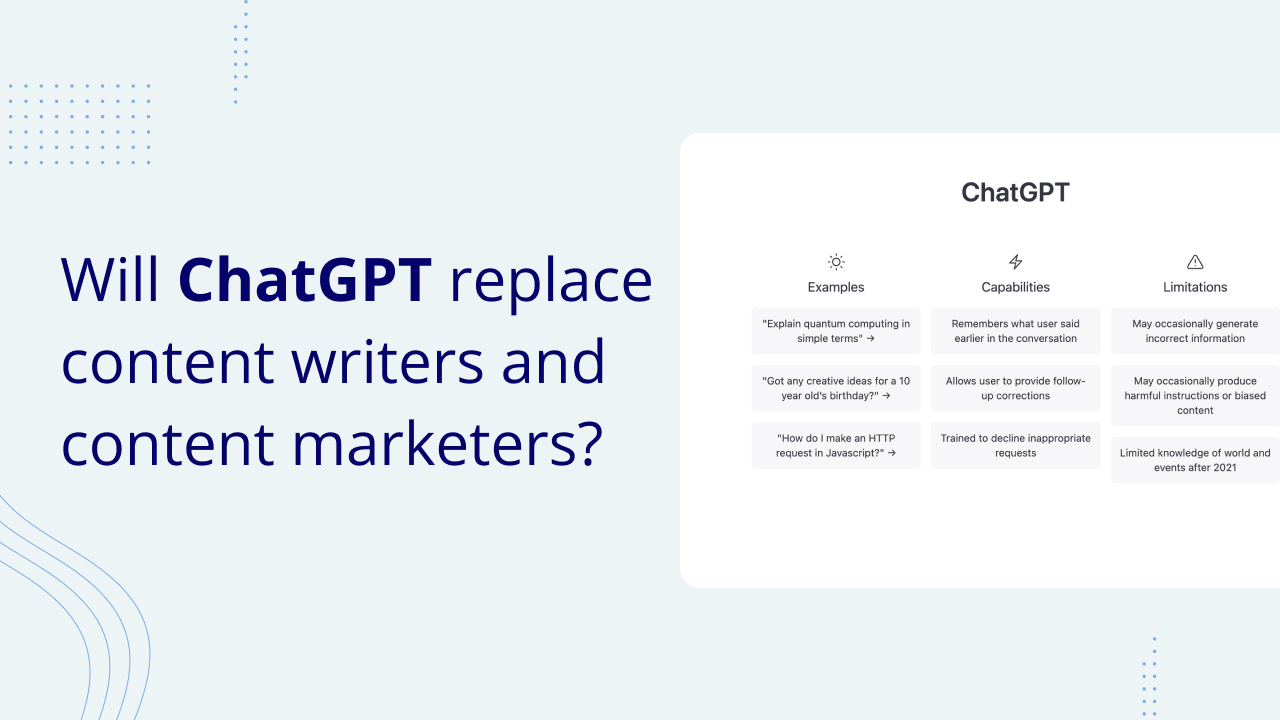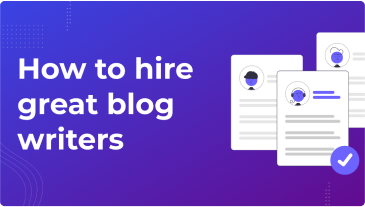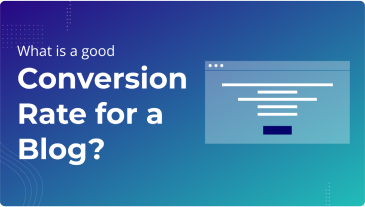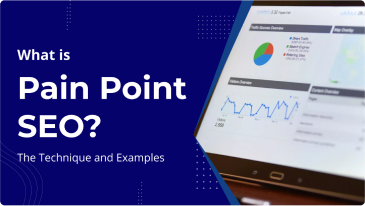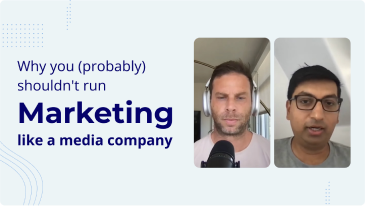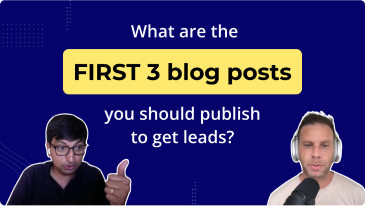We define category keywords as search terms that indicate a searcher is actively looking for products or services in a specific category. For example “best accounting software” or “content marketing agencies”.
Category keywords make up one of the three main buckets that we think of for high buying-intent, or “bottom of the funnel”, keywords. The other two being jobs-to-be-done and comparison and alternatives keywords.
The defining characteristic of category keywords are their extremely high buying intent — users are actively looking to buy your type of product or service. They don’t need to be educated on the problem or led through a buyer’s journey; they’re ready to buy now.
Due to their high buying-intent, category keywords tend to convert at much higher rates than most SEO keywords. In our study of 90+ rankings across dozens of clients’ accounts, category keywords had an average conversion rate of 4.85%, whereas most blog posts that target more informational (“top-of-funnel”) keywords typically convert at 0.5% or less (many don’t convert traffic to product leads at all). This is nearly 10x the difference.
However, from talking to and seeing the analytics of over a hundred companies over the years, we’ve noticed that the vast majority of companies only target one or two category keywords with their homepage or product pages.
This gross underutilization of category keywords is problematic for several reasons:
- Companies typically only focus on one or two category keywords and think that’s it, when in reality there are usually dozens of high converting terms to target.
- Companies often rely exclusively on their homepage or product/service pages to target these keywords. However, search engine results pages (SERPs) typically favor comprehensive blog posts. As a result, these pages rarely achieve high rankings.
- Companies don’t thoughtfully prioritize the order in which they target these keywords, which often leads to slower results.
All of this leads to brands leaving tons of conversions on the table in their SEO and content strategy.
In this post, we’ll cover how we solve these issues and have approached targeting hundreds of category keywords for dozens of clients. Specifically, we’ll cover:
- Types of category keywords and their average conversion rates
- Effective strategies for discovering a wide range of category keywords
- Best practices for targeting these keywords
- A framework for prioritizing keywords to optimize your SEO efforts
Types of Category Keywords
At Grow and Convert, we think of category keywords as falling into one of three main types:
- Main category keywords
- Side category keywords
- Category keywords with a layer of specificity
Understanding these distinctions will help you identify which are the most valuable for your company in terms of conversion potential, so you can focus your efforts.
Main Category Keywords
Main category keywords are the most straightforward. These keywords directly describe the core product or service your business offers. For instance, if you sell accounting software, your main category keywords would be “accounting software” and variants like “best accounting software”.
Keep in mind that while synonyms may appear interchangeable to us, Google displays different search results for each variant.
Note that there are many synonyms that seem to mean the same thing to a human, that Google ranks different results for. Therefore, you’ll need to target each separately to rank for both.
For example, people might also search for accounting software using terms like“bookkeeping software” or “financial management software.”
If Google is ranking the same web pages for both your main category keyword and one of its synonyms, it means you don’t need to create a unique page for each keyword. Google is viewing them as having the same intent.
However, if the SERPs for each keyword show different web pages ranking, it suggests the intent behind the keywords differs, meaning Google won’t rank the same pages for both. In this case, you’ll need to create separate pages to cater to each specific intent and rank for each.
Finally, note that a single company, brand, or even product may have multiple category keywords to target, not due to synonyms, but because the product or service has distinct features or use cases that correspond to different categories.
For example, we’ve had web analytics software clients whose products serve as “heat mapping tools”, “website visitor tracking software”, “visitor recording software” and “funnel analysis software” — all valid category keywords.
Note that these are different from side category keywords (discussed below) because these companies have multiple main offerings, whereas side category keywords are not part of the main offering.
Our recommendation: Take the time to list every possible category keyword related to all features and use cases of your product(s). Cast a wide net and use keyword research tools to verify search volume and prioritize the order in which you target these keywords (more on that below).
Average Conversion Rate for Main Category Keywords: 4.85%
In an analysis of 95 different articles across various clients (mentioned above), we found that main category keywords convert at a rate of 4.85% on average, which is significantly higher than the average blog post.
We find that typical blog posts focusing on high-volume, top-of-funnel keywords like “what is accounting” and “project management trends” tend to convert at a rate of 1% or less. We’ve even observed instances where clients’ blog posts, before implementing a conversion-focused strategy, converted at extremely low rates, like 0.03% to 0.19%, with some generating no conversions at all over extended periods.

Category Keywords with a Layer of Specificity
Category keywords with a layer of specificity target a particular niche within your broader category. Using our accounting software example, a layer of specificity could be “accounting software for freelancers” or “cloud-based accounting software.”

In our experience, these layers of specificity attract a more qualified audience because they target searchers who are looking for a solution tailored to their specific pain points. As a result, they provide an amazing conversion opportunity if your product has features that cater to those pain points.
For example, say someone is searching for “accounting software for small businesses.” Searching for “accounting software” by itself shows high buying intent. But the addition of “small business” indicates a person motivated to solve specific pain points. So, if your accounting software has features that cater to small businesses, and you can create content that addresses those pain points — and show how your product solves them — you’re in a great position to convert the searcher into a customer.
Because of this, in our past client data, we’ve seen that category keywords with a layer of specificity have the potential to convert at a much higher rate than broader category keywords. For instance, we wrote a post for a client targeting the keyword “marketing asset management software” which had a conversion rate of 15.2%. This was significantly higher than the average conversion rate of 4.85% for posts targeting general category keywords.
Finally, we’ve noticed that these longer-tail category keywords often have less competition since most businesses focus on higher-volume keywords. So they can be a good option for getting fast results.
Average Conversion Rate: 2.96%
Category keywords with a layer of specificity convert at a rate of 2.96% on average, but can convert as high as 15+%.

Side Category Keywords
Side category keywords represent features or use cases that are closely related to your main offering, but not the primary focus. For example, that same accounting software might have a feature for invoicing so side category keywords would include “invoicing software” and “online invoicing tools”.

A common objection to targeting side keywords is that companies feel it narrowly defines their business and limits their perceived offerings (“We aren’t just invoicing software!”). They worry that focusing on a specific feature, like “email sequencing,” will make customers think that’s all they offer (“But we’re an entire marketing automation platform!”).
In our experience, this issue is easily addressed within the content. Specifically, the content should, of course, speak to the intent of the software (e.g. covering invoicing software needs and how you provide those features) while also showing how the targeted feature fits within the larger product or service ecosystem, and explaining the benefits of your entire product suite (e.g., why it’s convenient to have invoicing and accounting in the same software).
This way, you can use people’s demand for specific features or point solutions to expose them to your offering, even if it’s more comprehensive than what they searched for. Not everyone will need your larger solution, of course, but as we share below, these still convert decently well.
Another objection we sometimes hear is that companies are hesitant to target certain side category keywords because that area isn’t their strong suit and they question whether or not it will actually convert customers on its own. For example, a company with an email marketing platform might have simple CRM capabilities, but they know they can’t replace a dedicated CRM platform like HubSpot.
This is a fair objection and one that warrants consideration. If you truly feel you aren’t strong in a specific feature category, then it’s fair to decide not to target it, even if there are keywords with good search volume. If your product isn’t strong in those categories, the chances of those customers being good long-term paying customers are low. Ultimately, it comes down to opportunity cost and prioritization. If you have other more valuable keywords to target, go after those first. (More on this later.)
Average Conversion Rate: 1.94%
In the same study mentioned above, side category keywords convert at a rate of 1.94% on average. Although this is the lowest converting type of category keyword on average, it’s still about 2x the conversion rate of top-of-funnel blog posts.

How to Find Category Keywords
The key to finding lots of different category keywords is understanding how your customers talk about the products or services you provide (main category keywords) and which aspects of your solutions get them most engaged (side category keywords, layers of specificity). You need firsthand data on how they perceive and talk about your products, how they describe their problems, and what language they use when searching for solutions.
The best approach is to have direct conversations with your customer-facing teams. We’ve talked about this extensively before, including:
- What questions we ask to understand customers’ pain points
- How to conduct interviews even if you don’t have customers
- An example of how we surveyed G&C readers and what we learned
This step gives you a list of pain points. Then, you correlate those with SEO keywords from keyword research tools (like Ahrefs, Semrush, or any others). These tools provide data on search volume, keyword difficulty, and can suggest variations and synonyms that you may not have considered.
You can also look at Google’s autofill suggestions that appear when you start typing a query, the “people also ask” sections, and related searches. These features can reveal common search patterns and variations that you can incorporate into your strategy.
Finally, you can utilize online communities and forums like Reddit to see how people phrase their pain points and describe solutions like yours.
By combining customer insights with a variety of keyword research methods, you can develop a comprehensive and targeted list of category keywords that are much more likely to resonate with your ideal audience and drive conversions.
How to Prioritize Which Category Keywords to Target First
Most SEO folks prioritize keywords based on search volume alone — the higher the volume, the better. Instead, we recommend starting with the category keywords that are most closely aligned with your product’s strengths because these will likely have the highest conversion rates.
Then, consider your current domain authority and resources. It might be more strategic to initially target less competitive keywords and gradually build up to more challenging ones. Tools like Ahrefs and Clearscope can help assess keyword difficulty and provide insights into search volume and ranking potential.
For example, let’s say you offer a CRM platform known for being easy to use and budget-friendly. Rather than immediately targeting “CRM software,” you might start with terms like “affordable CRM platform” which align with your key differentiators and are less competitive.


On the other hand, if it’s a particularly valuable keyword, it’s totally reasonable to decide to target it early on because it will likely take longer to rank. We typically start with a mix of both.
Finally, you’ll need to monitor the performance of your targeted keywords and track conversion rates. This allows you to adjust your strategy so you can focus on keywords that deliver the best results and iterate on those that underperform.
Targeting Category Keywords with Blog Posts vs Product or Homepages
Most companies target category keywords through their homepage and product pages and save their blog for top-of-funnel content. However, in our experience, blog posts often outperform product pages for category keywords because they:
- Satisfy the searcher’s intent more thoroughly, which leads to higher rankings for a larger variety of keywords
- Allow for a stronger sales pitch, which leads to higher conversion rates
In many cases, the top-ranking results for category keywords are list posts or articles that thoroughly explore how a specific product addresses a pain point. This is because when someone searches for a category keyword, they’re often in the research phase and are looking for a range of options and how to choose the best one for their needs.
Unlike product pages which focus only on your solution, detailed blog content can discuss the benefits and use cases of the product or service, compare options, teach readers how to evaluate those options, and naturally lead readers to your offering. This comprehensive approach better serves searchers looking to understand the full landscape before making a decision. It also allows you to craft a more in-depth sales pitch around the specific pain points of that reader.
Plus, because you have to deeply satisfy intent in order to rank, your homepage can only target a limited number of keywords effectively. In contrast, you can create numerous blog posts that each focus on a specific variation of the category keyword.
For example, you could have one blog post targeting “accounting software for small businesses,” another targeting “accounting software for freelancers,” and yet another targeting “accounting software with time tracking.”
This strategy allows you to cast a wider net and capture a larger share of organic traffic, while still maintaining a laser focus on satisfying the intent of each specific keyword.

All of this helps you rank higher for more keywords and convert more of your readers to paying customers.
Learn More About Our Agency
- SEO and Content Marketing Service: If you want to hire us to execute a content-focused SEO strategy built around driving lead generation and sales, not just traffic, you can learn more about working with us here.
- Paid Search Service: We started PPC services at Grow and Convert after seeing thousands of dollars of wasted spend in our client’s Google Ads accounts (full story). Specifically, we noticed that many paid search agencies focus their strategy around maximizing clicks and traffic and rely heavily on Google’s automation tools. In contrast, we applied our well honed bottom of funnel strategy from SEO to paid search, where we take an active, manual approach to ensuring every campaign maximizes lead generation instead of click generation.
- Join Our Content Marketing Team: If you’re a content marketer or writer and would love to do content marketing in this way, we’d love to have you apply to join our team.
- Our Content Marketing Course: Individuals looking to learn our agency’s content strategy and become better marketers, consultants, or business owners can join our private course and community, taught via case studies, and presented in both written and video content formats. We include several details and examples not found on this blog. Our course is also built into a community, so people ask questions, start discussions, and share their work in the lesson pages themselves, and we, along with other members, give feedback. Learn more here.
- Continue Learning: Find additional content on our blog and YouTube channel.


